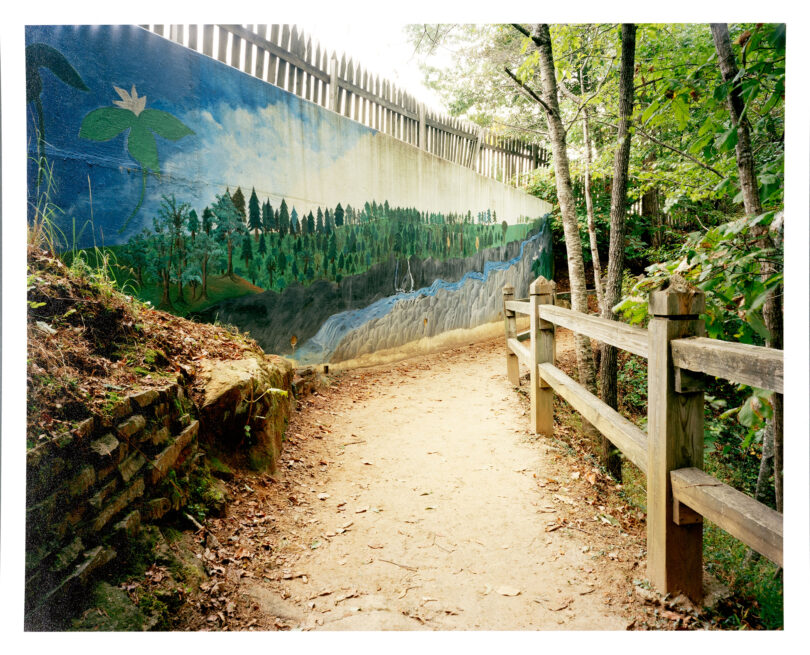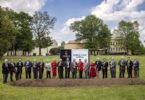When George Cooke painted his image of tourists awestruck by north Georgia’s Tallulah Falls in 1841, the natural wonder was already a major attraction.
The focused exhibition “On Wonder and Witnessing at Tallulah Falls” raises questions about what, exactly, a natural wonder is. On view at the Georgia Museum of Art through Jan. 12, it includes Cooke’s painting at its center. Through placing Cooke’s image alongside Caitlin Peterson’s contemporary photographs of the area, the exhibition sheds light on the complexities of designating natural marvels and the contradictions inherent in observing nature.
Cooke was born on the eastern shore of Maryland and taught himself art at a young age. Despite showing early talent, he couldn’t afford expensive art lessons, so he became a partner in a mercantile business in Washington, D.C. After his dry goods store failed and his attempts at land speculation were unsuccessful, Cooke bought four versions of Gilbert Stuart’s portraits of the first four presidents and painted copies of them.
This marked the beginning of his career as a traveling portrait artist. Between 1834 and 1837, Cooke traveled extensively, including in Georgia. Whether they were history scenes, portraits or landscapes, his images represented the popular academic style of balance, order, harmonious coloring, and clear and accurate drawing that produces idealized but realistic-looking work.
Tallulah Falls boasts a fascinating history. Often referred to as the “Niagara Falls of the South,” the Tallulah Gorge is an awe-inspiring fissure 2 miles long and nearly 1,000 feet deep. Ella May Thornton, Georgia’s state librarian, named it one of the “Seven Natural Wonders of Georgia” in a book by that title in 1926, and it remains a popular tourist attraction.
Peterson takes the “Seven Natural Wonders of Georgia” as the title of a series of large-format photographs that examine the relationship between people and the landscape. Her photographs consider land use, nature tourism and human-made spectacles of nature. She often highlights the meeting of the natural and artificial. For example, she shows us signs that tout the “best” or “only” views of the gorge to reveal how our experiences of these places are controlled.
Together, the different views of this Georgia attraction offer an opportunity to take a step back and think about how our efforts to frame nature end up keeping it at arm’s length.
Related events include:
- The museum’s fall open house on Sept. 21 from 10 a.m. to 5 p.m., with Family Day, door prizes and curator-led tours (register at https://bit.ly/open-house-fall24)
- A conversation between Peterson and Athens photographer Jason Thrasher on Oct. 24 at 5:30 p.m.
All programs are free and open to the public unless otherwise indicated.








